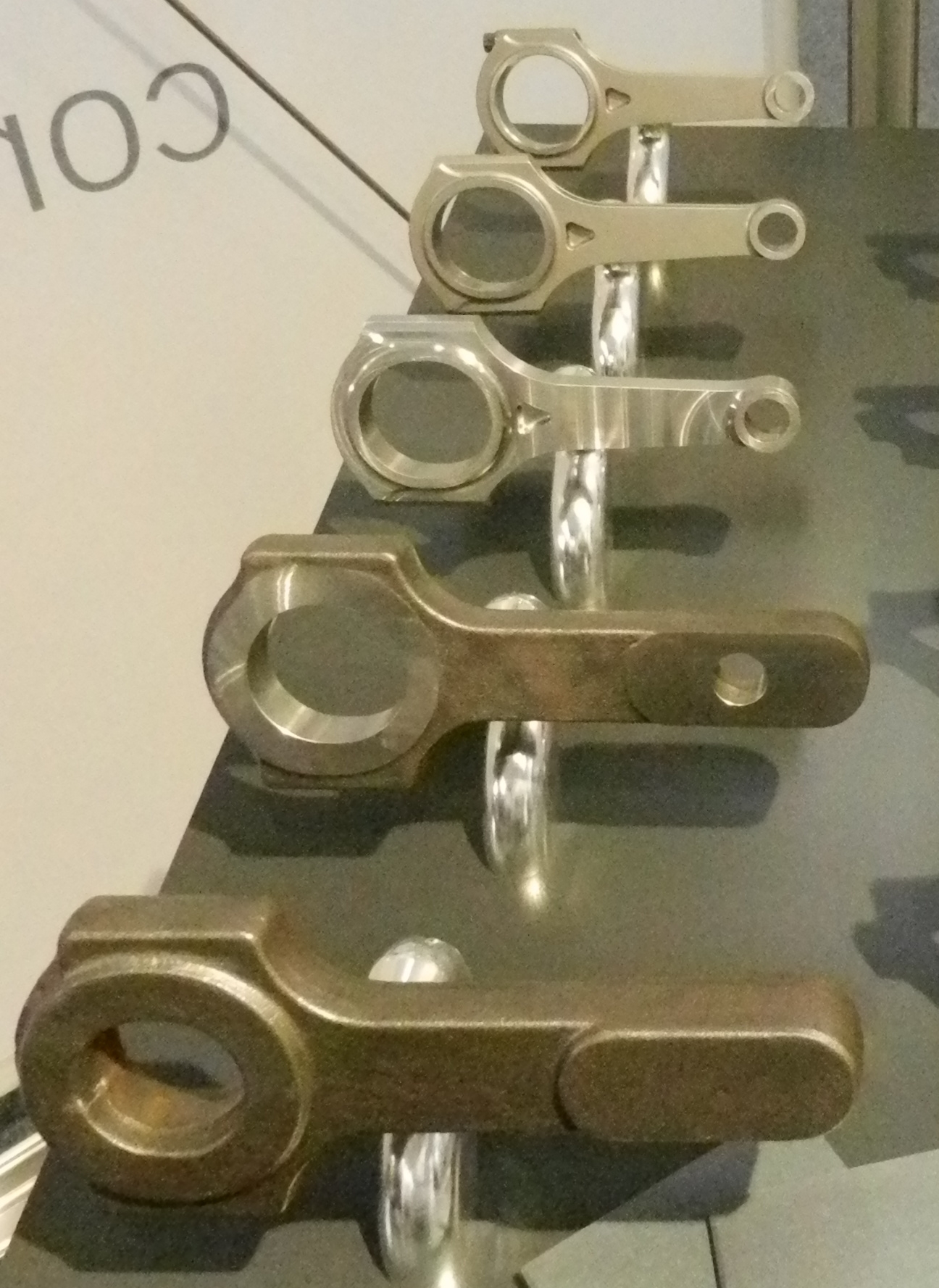Big-end design considerations
In the RET-Monitor collection of articles, there are already dozens of articles covering con rods, many of them covering individual design features. The aim of this article though is to bring some elements of these together and give some of the basics of the design process.
The first element we need to fix is size, which for many engine development projects will be fixed by the size of the existing crankshaft and the availability of bearings to suit. Where a bespoke engine is concerned, we have a clean sheet. The big-end sizing will be affected partly by the con rod considerations of bearing loading, but may also be influenced by the torsional and bending behaviour of the crankshaft. If the crankpin is made too small then the crankshaft will be too flexible, and problems such as critical torsional resonances in the running range of the engine and edge loading of bearings can result.
If we assume that such concerns have been dealt with then the diameter and width of the bearing needs to be based on the calculated loads and the PV rating of the bearing material. PV is the product of pressure and velocity, and some bearing suppliers will give this data along with some advice on what limits are placed on it – a certain PV rating applies provided that either pressure, velocity or temperature don't exceed a given value. Other companies are less helpful, and either don’t have any data or won’t give you the information. Sometimes this isn’t a problem, as they want to know your operating parameters and will make a recommendation of the correct grade of bearing, providing you can give them a diameter. This can be an iterative process, as you will possibly not have the diameter fixed and want to choose the diameter and width based on bearing performance.
After you have fixed the bearing diameter and width, the next design task is to size the fasteners; again, this is done using the calculated loads. There is a wide range of thread sizes (metric and imperial) and bolt lengths to accommodate most needs. There is also a wide range of materials to choose from, starting with high-strength steels, tool steels and superalloys. You may want a bespoke bolt or stud for your application, and most con rod suppliers will be able to work with you to use a bolt you have designed and made, or will have one made for you. Sometimes, unusual thread sizes are specified – for example, for an engine where M6 is too small and M7 is too large, M6.5 bolts and suitable taps can be made. Changes to the bolt pitch and thread form can also be specified, if you have the budget for this level of optimisation.
The method by which the two parts of the con rod are locked together is the final main detail to consider. Ring dowels which are concentric with the bolt are a nice solution, but push the bolts further away from the big-end axis than other locating features. This increases the contribution of bending stresses to the overall stress in the fastener. Small-diameter steel dowel pins are often used to locate the cap to the rod, and needle bearing rollers are sometimes used for this purpose. Serrations have been discussed before and are an increasingly popular choice, with more rod makers now having the facility to cut these accurately.
 Fig. 1 - From forging to finished rod, there are lots of design choices to be made
Fig. 1 - From forging to finished rod, there are lots of design choices to be made
Written by Wayne Ward